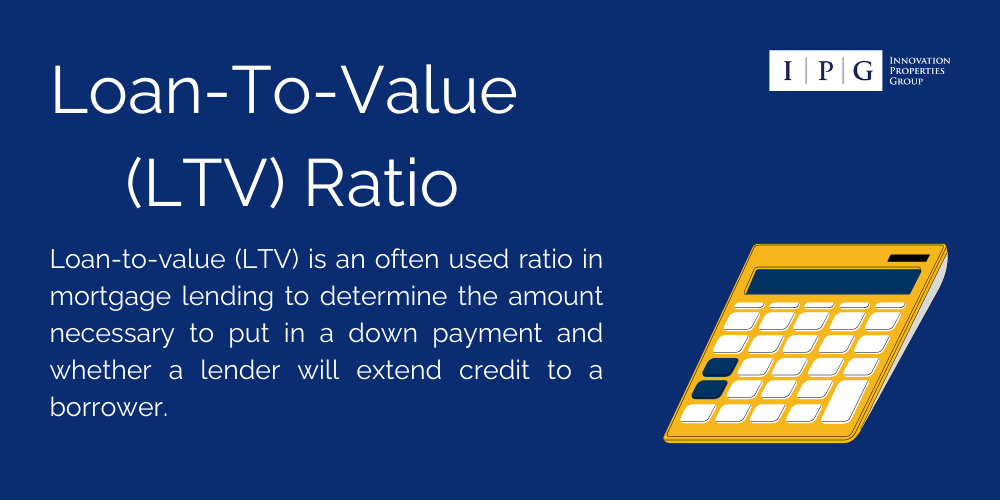In commercial real estate, a loan-to-value (LTV) ratio tells you how much of a property’s value you’re borrowing to finance your investment.
LTV is crucial because lenders use it to decide on loan approvals and terms. A higher LTV means you’re borrowing more relative to the property’s worth, which poses a higher risk for lenders in case of default.
For commercial real estate professionals, knowing how to calculate the LTV ratio isn’t just about crunching numbers; it’s about gaining a strategic edge. The LTV ratio compares the amount of your loan to the value of the property, serving as a barometer for lending risk. When it comes to refinancing, a favorable LTV ratio can be your ticket to better loan terms, influencing everything from interest rates to repayment schedules.
Investors who grasp the nuances of the LTV to CAC (Customer Acquisition Cost) ratio are well-equipped to measure the sustainability and profitability of their real estate ventures. Whether you’re acquiring a new property or leveraging your portfolio, a sound LTV can be a gateway to substantial savings and financial success.
As we dive into the finer points of the LTV ratio, you’ll discover how to precisely calculate your own, what lenders are looking for, and why an optimal LTV ratio is vital for your refinancing needs.
Get ready to maximize your real estate investments by understanding the loan-to-value ratio in commercial real estate.
Jump To:

What Is Loan To Value Ratio?
The Loan to Value (LTV) ratio is a financial term used by lenders to express the ratio of a loan to the value of an asset purchased. It is usually a percentage figure (loan to value percentage) that reflects the amount of a mortgage in relation to the total appraised value of a property.
In commercial real estate, a lower LTV ratio is generally perceived as preferable, as it indicates more equity in the property and presents a lower risk to lenders. This ratio is crucial when assessing loan applications, determining interest rates, and evaluating a borrower’s need for mortgage insurance.
Each LTV mortgage company has specific rules about this, and you should speak to your lender and/or CRE specialists first to determine if you must use an appraiser they work with.
Pro Tip: The main factors affecting LTV ratios are the down payment amount, sales price, and the property’s appraised value. A lower LTV ratio is achieved with a higher down payment and a lower sales price.
Loan-To-Value Ratio Calculation
Calculating your Loan to Value (LTV) ratio is a critical step in understanding your borrowing power, especially in the commercial real estate market. To begin, determine the appraised value of the property you are interested in or the price you intend to pay for it—whichever is less.
Next, establish the amount of the loan you’re seeking for the purchase or refinancing. Divide the loan amount by the property value to find the base ratio. Finally, multiply this figure by 100 to convert it into a percentage.
For example, if you’re considering refinancing a property appraised at $2 million with a desired loan of $1.5 million, your LTV ratio would be 75%—a figure that can impact your interest rates and need for insurance.
Understanding what is a good LTV to CAC ratio can also guide your investment decisions, ensuring you maintain a balanced approach to capital acquisition and value maximization.

Loan-To-Value Ratio Example:
Imagine you’re looking to purchase a commercial property priced at $1,000,000. You have $200,000 for a down payment and need a mortgage for the remaining amount.
- The purchase price of the property is $1,000,000.
- The down payment is $200,000.
- The loan amount needed is the purchase price minus the down payment: $1,000,000 – $200,000 = $800,000.
- To find the LTV ratio, divide the loan amount by the purchase price (or appraised value, if different): $800,000 / $1,000,000 = 0.8.
- Multiply by 100 to convert to a percentage: 0.8 * 100 = 80%.
The LTV ratio in this scenario is 80%. This means that the loan covers 80% of the property’s value, and the down payment covers the remaining 20%. An 80% LTV is a common threshold in real estate financing, as it often avoids the need for private mortgage insurance (PMI).
Why LTVs Matter
LTVs are important because they help lenders manage the risk of loan loss. When a loan defaults, the lender focuses on minimizing potential loss. Loan loss happens if the lender can’t recover the full amount lent.
By keeping a buffer between the loan amount and the asset’s potential sale value, lenders protect themselves. Also, lenders usually don’t finance 100% of an asset’s value to ensure the borrower invests their own money, reducing the risk of them abandoning the loan.
LTV vs CLTV (Combined LTV)
While the LTV ratio focuses on a single mortgage when buying a property, the combined loan-to-value (CLTV) ratio considers all secured loans on the property. This includes primary mortgages, second mortgages, home equity loans, or other liens.
Lenders use CLTV to assess the risk of default when multiple loans are involved, like having a mortgage and a home equity loan. They typically prefer CLTV ratios of 80% or higher for borrowers with strong credit. Primary lenders are usually more lenient with CLTV requirements.
To illustrate, while LTV only considers the primary mortgage, CLTV includes all loans. For instance, if a property valued at $200,000 has a primary mortgage of $100,000, a second mortgage of $30,000, and a HELOC of $20,000, the CLTV is ($100,000 + $30,000 + $20,000 / $200,000) = 75%.
These factors are crucial, especially in foreclosure scenarios.
High Margins on High LTV Loans
The loan to value ratio is the ratio of the money borrowed to the appraised value of the home.
Now, I know that most homes are appraised very close to the purchase price, but it’s not uncommon for someone to buy a house for $15K less than what it was appraised for.
This is a significant difference to the LTV rather than using my purchase price.
Banks have been taking the loan to value ratio (LTV) into account in their mortgage loan pricing since 2013.
The LTV is the ratio of the size of the loan to the value of the house for which the loan is granted. The higher the LTV, the higher the interest rate.
As a result, the margin for banks on loans with a high LTV ratio is higher than that on low-LTV loans.
The maximum margin for LTV mortgage loans with a high LTV ratio compared to mortgages with a low LTV stood at 75 basis points at the beginning of 2016.
According to market operators, higher loan losses and a higher capital requirement at banks and insurers for high-LTV loans can only account for a very small part of this difference.
The remaining difference may be explained by the fact that there is slightly less competition in the high-LTV segment, due to the reluctance of some of the new entrants to provide mortgages in this segment.
But let’s talk about sure things, or – Why does the loan to value ratio matter?
How Higher LTV Ratio Could Affect You
When you apply for an LTV loan, lenders will typically review your credit history and other financial factors like>:
- Your debt-to-income ratio
- Credit scores
- Consider your loan-to-value ratio, etc.
They need to determine how risky your loan may be.
The higher your LTV ratio, the riskier your loan may appear to lenders. Also, when you make a smaller down payment, you have less equity (ownership) in your property.
That can be problematic for the lender because if you default on a loan, the lender might not be able to recoup its loss by selling your property.
A lower loan-to-value ratio indicates to the lender that you may be less likely to go “upside-down”. In the case of a car loan, this is when you owe more on the car loan than it’s worth on the market. A bigger payment can help lower your loan-to-value ratio.

As a borrower, there are several ways a higher LTV ratio could affect you.
- Higher interest rate – Not paying a higher interest can make a significant difference in the total amount you pay for your loan over time.
- Private mortgage insurance – If you decide to refinance your mortgage…
- Higher monthly payments – too high loan to value ratio can impact your loan terms, strain your budget, and make your loan much more costly
- Refinancing – Lower LTV ratio may help you qualify for better interest rates
- Building equity in your asset – For example, if you decide you want to take out a home equity loan or line of credit, having more equity in your home can really pay off
When you apply for any loan, it’s important to understand the financial implications of a high loan to value ratio. Lowering your LTV ratio may put you in a better financial position to receive a better interest rate and help you save money over the life of your loan.
There are even ways to lower your loan to value ratio, which may ultimately help you build more equity in your property. If you are interested in knowing more, feel free to contact IPG because if your loan-to-value ratio is relatively high, it may be a good idea to increase your down payment before you take out a loan.
In Case You Need an Office Space

Stand-Alone Flex Building with Heavy Power

Highly Exposed Yerba Buena Stand-Alone Building With Heavy Power
























